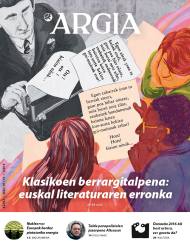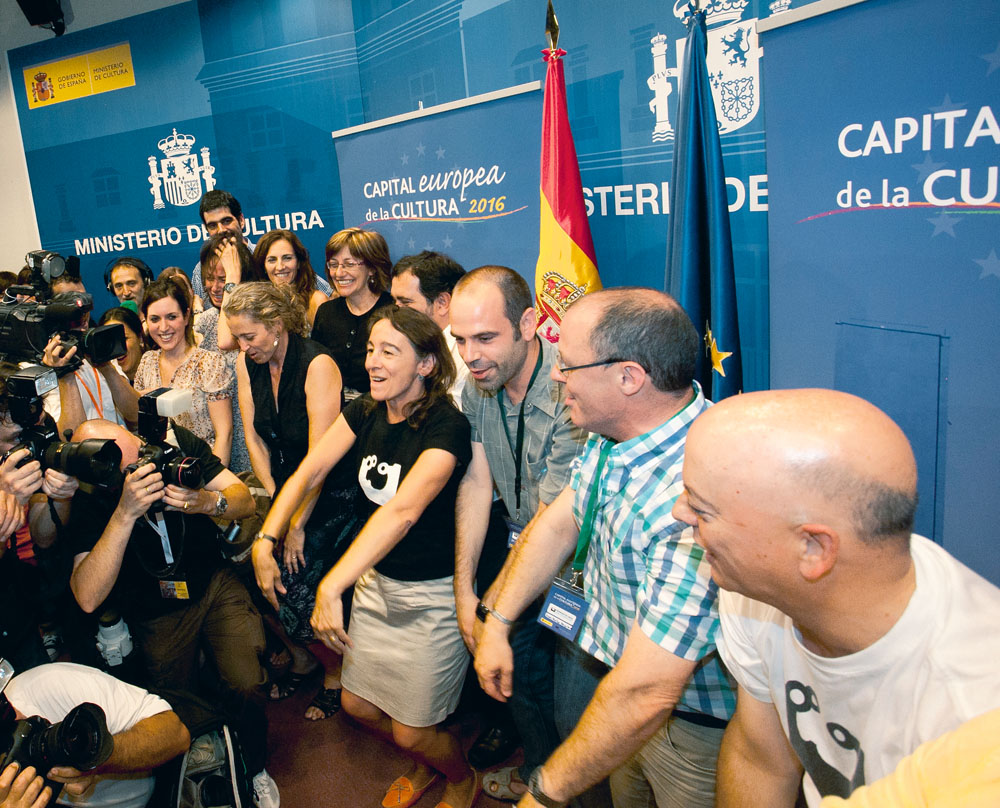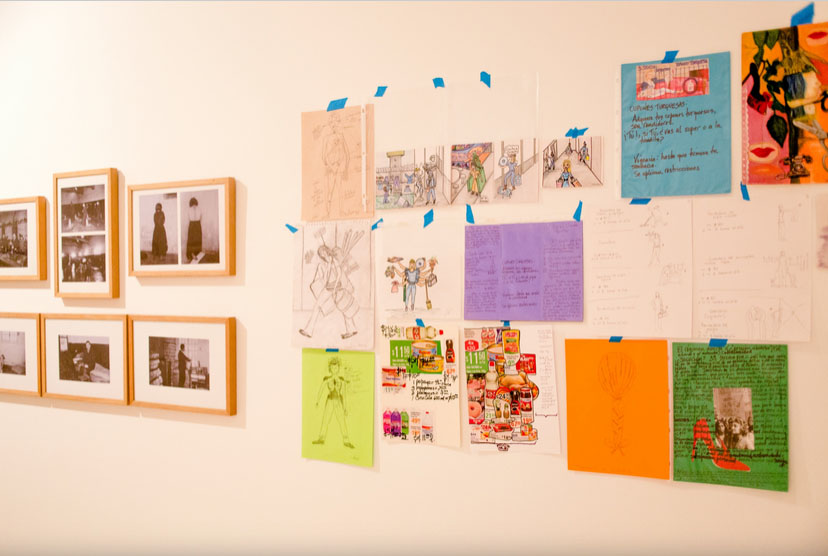2016 A year in which culture was used as an excuse?
- Looking back, few believe that 2016 met their cultural goals. On the contrary, since then, many see the project as one of those responsible for the massive tourist of the city. But what did the opponents of capital say in their day? Has capital had a direct relationship with the evolution of the city? This report was published by Irutxuloko Hitzak and was brought with the Creative Commons BY-NC-ND 4.0 license.
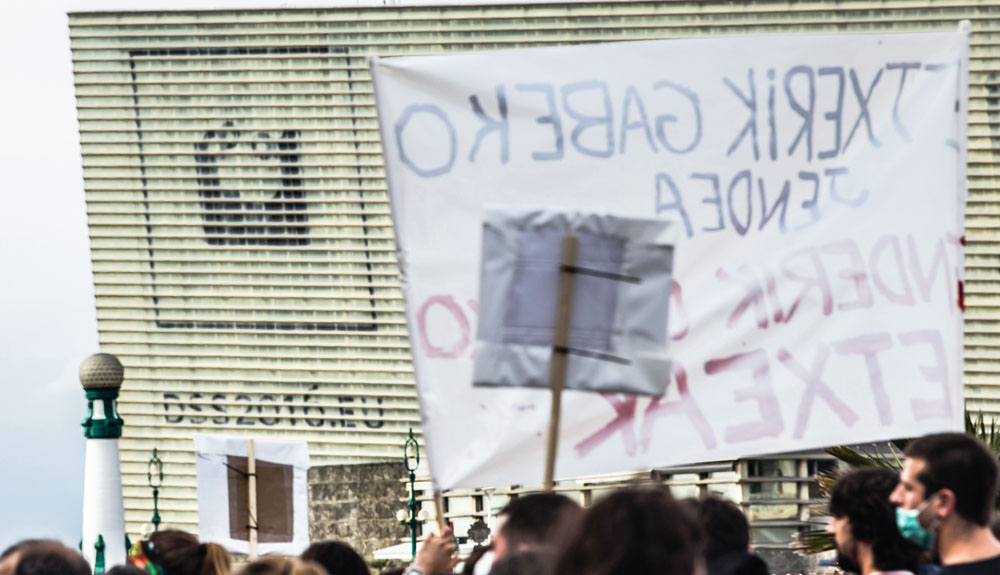
In 2009, coinciding with the presentation of the candidacy of cultural capital, the first concerns and criticisms came. The Capital of Torture San Sebastian or the cultural stickers of the Capital spread a lot. Also, in April 2010, How many messages… several (2016) scams! Under the motto "With the motto", numerous party commissions, neighborhood associations and support associations for the Basque country organized a concentration.
In any case, when Bildu took the project, criticism dropped until 2014. The giant logo DSS2016EU, located on the hillside of Mount Igeldo, tasted under the motto AHT TAV EZ Move! performing the Concha Bay with ten days of claim.
Someone will remember, as Itxaso acknowledged, how Odón Elorza of the PSE-EE, Denis Itxaso, Jorge Letamendia and Alberto Rodriguez "rainhats dresses" were at night to remove the cover and to re-establish the DSS2016EU logo. The fact that the former mayor was willing to take action speaks volumes about the situation in the city. Because the image acquired special relevance in Donostia 2016. The movement against the TAV organised the first debates by taking action: Azpiegiturak, TAV and Cultural Capitality 2016: Cultural transformation or commodification of the city?
From these reflections arose the Desokupatu 2016 movement, which gathered the first reflections as follows: “We believe that the European Capitality 2016 is a tool for the commercialization of the city, with a clear orientation to the tourism promotion of the ‘brand’ to make San Sebastian a commodity. ‘Culture’ is a claim to make the urban space and the city avail.’
In 2015, the Barcelonan anthropologist Manuel Delgado held a prestigious talk in which many debates had already been held and it was seen that the project was not going to bring what was said. The conference was called "culture as an excuse," and it talked about the "city market," the idea of selling the city as a brand. "These kinds of projects are called universal abstract principles: coexistence, peace, culture… In this case, no one can be against culture. In short, what is culture? ".
Delgado was also looking for coexistence: "I don't see the angry people on the street. What is coexistence? They want to impose a vision. ‘Culture has conquered conflict’. It's about that, about pacifying, and making cities submissive, kind and dignified."
For him, the capitality, besides selling the city, sells figurants: "Everything is an advertising spot in which everyone has their role, the smile, that's what participation is." In short, "it's about extending the middle class culture, for middle-class people, in a city where everyone is middle-class. And those who are not, or don't seem to be, will be eliminatory."
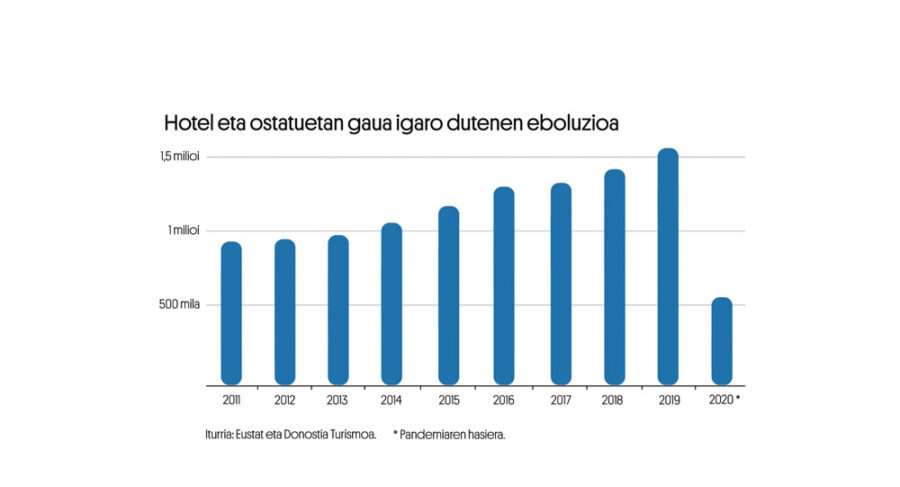
By then, popular movements from Donostiarras were added to the sale of the capital city brand. And this, in a context of continuous growth.
The problem of tourism and housing
Undoubtedly, the problem of tourism and housing in San Sebastián is a phenomenon that has become more acute in recent years. In the data, however, growth is less mechanical. The table above shows the number of overnight stays in hotels without taking into account other overnight stays. Between 2011 and 2019 there have been 574,096 overnight stays in San Sebastian hotels (30% more).
The figures are much higher if you take into account Airbnb and other tourist accommodations. In 2016, 1,894,610 stays were estimated, in addition to hotels (600,000 more). In fact, the theme of hotels has gained prominence in the city, with the opening of 45 new hotels since 2016 in San Sebastian, with over 3,000 beds.
Airbnb counts, in late 2021, with 1,432 homes in San Sebastian. Of these, 982, i.e. 68%, correspond to owners with several properties: FeelFree Rental, for example, offers 129 houses and The Rentals Colection 72.
It has also influenced housing. In 2015 the square meter cost 3,627 euros and in November 2021 the price has risen to 4,925 euros. As for the rental, the rental price in April 2016 was €11.9 per square meter in San Sebastian, in January 2021, €15. It is an increase of 26.05%.
Red carpet ‘to the big’
It is impossible to mark the only person responsible in the process of tourism and speculation that the city has experienced. The well-known geographer David Harvey also recognized in his book Rebel Cities that the conflict between ETA and the states affected tourism in Euskal Herria.
Starting in 2011, as Delgado said, investors had to be taught that the city was pacified. And for that speech, it was 2016.
In any case, journalist Aingeru Mungia announced in El Diario Vasco in 2014 what was about to happen in the article Los grande stick for Donostia [The Magnates fighting for San Sebastian]. The interest of the big brands of Inditex and the whole world in the city is remarked when "San Sebastian was in Boga" and the process of buying its buildings began.
The door to the door of 2016 stated that it was an "incentive" for big brands and tourism, and most importantly, that in 2015 the old income law was going to end. And it was announced in the rough. "Shops that have been paying very low rents for decades will have to throw the shutter. The big ones are there, with hooks and pelagic nets, waiting for the best pieces to take them to their mouths."
2016, with all its good intentions, was part of a more global process of the city, demonstrating to Europe, the world, that it was a good place for investment. Cartels "San Sebastian is not for sale" no longer make much sense. San Sebastian has already been sold and we have nothing left.


In May 2006, the City organized a conference at the San Telmo Museum to publicize the great cultural projects of San Sebastian. In it were presented the Victoria Eugenia Theatre, the San Telmo Museum and Tabakalera. The Victoria Eugenia Theatre was opened in March 2007. San... [+]
Iazko abenduko egun bat izan zen, larunbat goiza. Ahoz aho zabaldutako informazioari esker izan nuen filmaren proiekzioaren berri eta kulturgune batera joan nintzen, Donostian, gauza handirik jakin gabe: zer ikusiko genuen pantailan, sarrerarik ordaindu behar ote zen, zenbat... [+]










